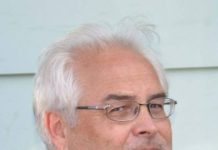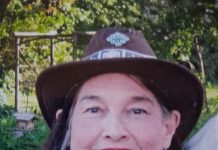By John Francis
As a new year begins, there is an excellent CAO Report in the Agenda for the January 13 MNBP (Municipality of Northern Bruce Peninsula) Council Meeting. It lays out our community aspirations for 2025 and beyond.
But there is one glaring omission from that 2025 mission: getting Bruce County to pay its share.
The first step in that process would be to evaluate whether or not Bruce County is already paying its share. Obviously, it’s not, we say, but that is a subjective judgement. We could carefully document how and why we believe Bruce County is not paying its share but again, it would look like a subjective account.
So MNBP hired a consultant — StrategyCorp — to provide an unbiased perspective on MNBP’s financial relationship with Bruce County. But the consultant’s report, presented to Council on July 22, focused instead on ways a county might adjust, or compensate for, an imbalance. It ducked the issue of whether or not such an imbalance exists and whether compensation was appropriate.
Which, in turn, put MNBP right back at the starting line: trying to figure how to initiate a discussion without it descending into he-said/she said.
The most valuable insight I gleaned from listening to the consultant’s presentation was that many counties provide “Cost Compensation Grants” to some of their municipalities.
Cost Compensation Grants, the StrategyCorp presenters explained, are political in nature and never publicized. They are paid when a county acknowledges that there is an imbalance in their funding structure.
I think the key word here is “acknowledges”. Bruce County has not acknowledged that there is a funding imbalance with respect to MNBP and is unlikely to do so unless someone — preferably a neutral third party — does a careful cost/benefit analysis.
Council had hoped the StrategyCorp report would provide that analysis, or at least, initiate the process. When it didn’t, MNBP was thrown back on its own resources — resources which are always stretched to the breaking point.
In case you’re wondering whether such a reckoning is worthwhile, here’s a thumbnail:
• “Services related to roads” is by far the largest component of the county budget. This includes bridges.
• Bruce County operates many hundreds of kilometres of County Roads, including dozens of bridges.
• For its $8 million annual contribution, MNBP gets 32 km of County Roads and one squatty little bridge at Judges Creek.
Planning for Forest Fire
We haven’t had a serious summer drought in several years but sooner or later our run of good luck will end.
The Osoyoos fire, the Fort McMurray fire and the Jasper fire make it clear that towns and villages are not safe from wildfire.
The Los Angeles fires offer a different lesson — even cities with fire hydrants are not safe from wildfire.
But if you dive a little deeper, those fires all have something in common — a predominance of fire-prone conifers.
You never read about forest fires in Southern Ontario — because there aren’t any. Deciduous trees — aka hardwoods — don’t burn very well.
Spruces, firs and pines tend to have a lot of dead branches under the treetop canopy of needles. Those dead branches are perfect fuel and it doesn’t take much to dry out live spruce/fir/pine needles to the point that they’ll burn too.
This is mostly what happened at Fort McMurray, Jasper and Osoyoos.
The devastating fires on the Saugeen Peninsula (as it was then called) in 1907-8 had a very different cause. They started with slash piles that had been allowed to bake dry after a clear cut.
Prior to that, fire hadn’t been a problem on the peninsula. That’s why it was a dense forest of mature trees, and so attractive to the loggers. Certainly there were pines and hemlocks in that forest, but the dense, hardwood canopy kept the forest floor moist and kept the fire risk low.
So how do we get back to that?
Because what we’ve got now makes me nervous. There’s a lot of balsam fir in our understory. Balsam fir has a nasty habit of growing to a height of twenty or thirty feet and then dying, forming a perfect, fire-ready understory.
As all our ash trees die from emerald ash-borer infestations, we are going to have a lot of holes in our tree canopy. We should probably encourage hardwood species to fill those holes.
I wish I knew more about this. Fortunately, fire is the topic/theme of this year’s Sources of Knowledge Forum, which will be held in Tobermory in early May.
Should we have a municipal strategy about this? Probably. With any luck, our Council and staff will take advantage of the opportunity to learn from the experts at SOKF.












